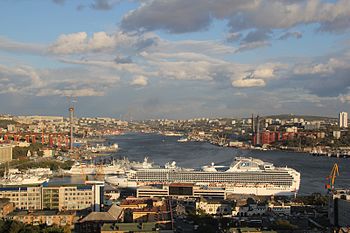Cited as one of the 20 most viable and most competitive business sites in the Philippines in 2005 by the Philippine Cities Competitiveness Ranking Project, it is one of the fastest-growing cities in Mindanao and in the Philippines. Tagum City has become a bustling center of culture, commerce, health services, and entertainment in the Davao Region, in Mindanao and in the southern Philippine region.[1]
According to the actual 2010 census, more than 256,069 people live in 43,193 households.
In 2006, Tagum City became the Palm Tree City of the Philippines. It also holds an unofficial record for having the tallest Christmas tree in the Philippines. At 153 feet tall, the stunning structure erected at the Freedom Park at the back of the City Hall rivaled Puerto Princesa City's 100 feet tall Christmas tree. Tagum City is also the home of the world's biggest wooden rosary, made out of ironwood, located at the Christ The King Cathedral, also one of the region's biggest Catholic churches.
Since 2000, Tagum City annually hosts the Musikahan Festival aimed at showcasing the musical talents of Tagumeños, Mindanaoans and Filipinos in general, draws thousands of visitors both locally and internationally. Currently, the city is the only one in the Philippines to have a direct joint agreement with Venezuela for cultural exchange, in line with the 11th Musikahan sa Tagum in 2011, thus supporting the City's claim as the "Cultural Center of Mindanao," and as affirmed by the University of the Philippines Diliman College of Music and College of Arts and Letters.
Tagum City hosted three major national competitions in recent years, to wit, the National English Jazz Chants Festival, the National Schools Press Conference and the 9th Musikahan Festival. The 3rd International Rondalla Festival, the first international competition Tagum City hosted, implanted the city into the roster of cultural hubs in Southeast Asia.
Tagum City is part of Metropolitan Davao (Metro Davao), and is the crossroad among major cities in Northern Mindanao, Eastern Mindanao, and Southern Mindanao.




















